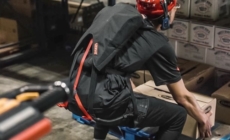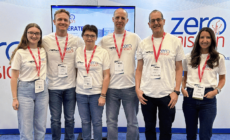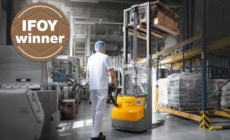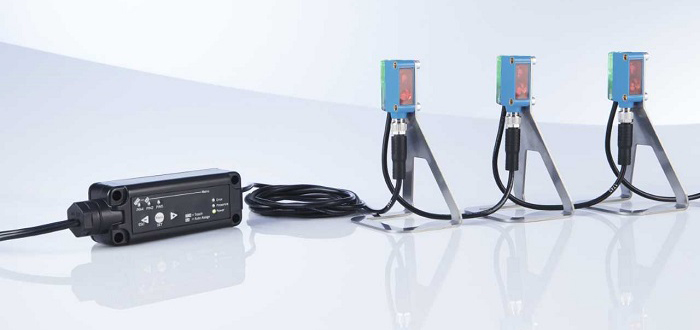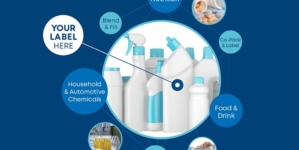-
ROSSLARE EUROPORT TARGETS HEALTH & SAFETY WITH CAMERA TELEMATICS PARTNERSHIP - 2 days ago
-
Landmark Study Reveals Wearable Robotics Significantly Boost Safety and Efficiency in Industrial Environments - July 24, 2024
-
Visku Tackle The Retail Seasonality Challenge One Pallet At A Time - July 22, 2024
-
KAMMAC AND BERGEN LOGISTICS STRENGTHEN FASHION & LIFESTYLE SERVICES IN THE UK - July 19, 2024
-
TENTBOX EXTENDS PARTNERSHIP WITH ARROWXL TO SUPPORT INCREASING DEMAND - July 17, 2024
-
The Perfume Shop improves customer journeys while driving profitability in partnership with Scurri - July 17, 2024
-
ZEROMISSION SECURES £2.3M ($3M) INVESTMENT TO ACCELERATE ELECTRIC FLEETS - July 16, 2024
-
BCMPA CELEBRATES SUCCESS OF 2024 CONFERENCE - July 15, 2024
-
Best of the Best: Jungheinrich Celebrates Triple International Award Win - July 12, 2024
-
GOPLASTICPALLETS.COM CALLS ON NEW CHANCELLOR RACHEL REEVES TO CONSIDER PLASTIC PACKAGING TAX REFORM - July 10, 2024
SICK Reflex Array Sensors Are on the Leading Edge
SICK has unveiled its next-generation family of smart photoelectric 2D light array sensors, the RAY10 and RAY26 to detect even the most difficult-to-see objects moving on high-speed conveyors in materials handling & logistics.
The SICK RAY10 and RAY26 Reflex Array Sensors create a wide 2D light band to reliably detect the leading edges of objects, even when they not clearly defined, transparent, or are only a few millimetres high, such as polybags or flat parcels in the CEP (Courier Express & Parcel) industry.
SICK’s RAY10 and RAY26 sensors deliver consistently high detection results, no matter if objects are irregularly-shaped, randomly positioned on the conveyor belt, shiny, transparent, high-contrast, or varied in height or colour. The sensors will also detect perforated objects, such as plastic totes, without danger of false tripping or the need to programme multiple switching operations.
Where complex configuration of multiple sensors, or costly light grids, might previously have been needed to obtain reliable results, the compact RAY10 or RAY26 sensors achieve high levels of performance in a fraction of the space and set-up time.
“The RAY10 and RAY26 Reflex Array sensors are a new proposition for integrating even the most challenging detection tasks in high-speed conveying applications in parcel handling, warehousing or packaging applications,” explains David Hannaby, SICK’s UK Product Manager for presence detection.
“The sensors also offer all the benefits of smart diagnostics and IO-Link integration, while halving the costs of detection compared to conventional solutions.”
Installation and commissioning of the RAY10 and RAY26 is quick and easy, using SICK’s PinPoint LED technology which makes the light array clearly visible, so the sensors can be accurately aligned. A simple teach-in process completes the set-up. The sensor settings can also be adjusted via IO-Link according to the object size and the conveyor conditions, reducing the need for time-consuming manual intervention during commissioning and operation.
Both the RAY10 and RAY26 offer advantages for real-time condition monitoring and predictive maintenance. They feature SICK’s BluePilot bar-graph indicator to show the level of dirt build-up on the lens of the sensor and reflector. Using SICK’s AutoAdapt technology, the sensors automatically adjust their sensitivity to contamination to lengthen the time between maintenance intervals. The sensor status can also be communicated via IO-Link to the PLC, so cleaning can be scheduled without unnecessary downtime.
The RAY10 and RAY26 family are smart sensors that enable efficient Industry 4.0 integration of machines via IO-Link, together with the ability to track and view sensor health and diagnostics via an HMI or PLC. Smart logic functions embedded in the sensors themselves can also be used to develop custom field-level applications.
The SICK RAY26 sensor has three variants to detect objects ≥3 mm, ≥5 mm or ≥10 mm always within a 55 mm light array, with a sensing range for detection from 0 m to max. 4.5 m depending on the type. The RAY26 offers the option of conveyor belt suppression to compensate for vertical movement of the conveyor, through a stepped deactivation of the zone between the conveyor and the light array.
The smaller SICK RAY10 detects objects ≥5 mm within a 25 mm light array with a response time of just 0.5 ms and a maximum sensing range of 1.5 metres.
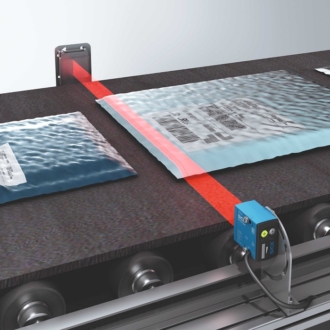
For more information please contact Andrea Hornby on 01727 831121 or email [email protected].



